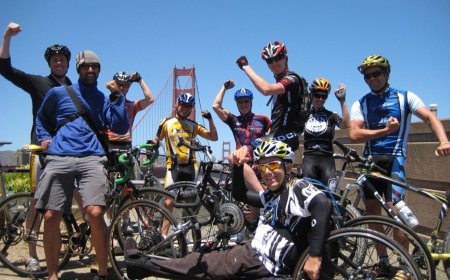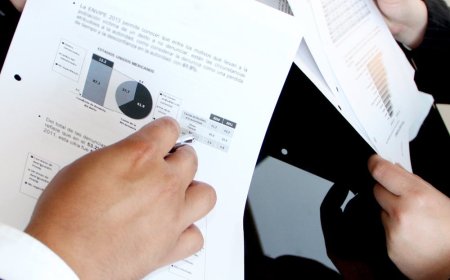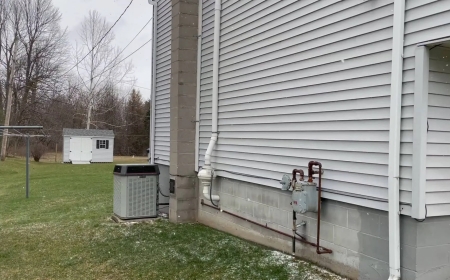Top 10 Hidden Gems in Dallas
Introduction Dallas is often associated with towering skyscrapers, sprawling shopping malls, and the bright lights of downtown. But beneath the surface of its well-trodden tourist corridors lies a quieter, more authentic city—one where local artists paint murals in forgotten alleys, family-run eateries serve recipes passed down for generations, and hidden gardens bloom unnoticed by passersby. Thes
Introduction
Dallas is often associated with towering skyscrapers, sprawling shopping malls, and the bright lights of downtown. But beneath the surface of its well-trodden tourist corridors lies a quieter, more authentic city—one where local artists paint murals in forgotten alleys, family-run eateries serve recipes passed down for generations, and hidden gardens bloom unnoticed by passersby. These are the hidden gems: places not listed in guidebooks, rarely advertised, and often discovered by word of mouth. But not all hidden spots are worth your time. In a city as vast and diverse as Dallas, trust becomes the most valuable currency. This guide reveals the Top 10 Hidden Gems in Dallas You Can Trust—curated for authenticity, consistency, and local approval. Each location has been vetted through years of resident feedback, repeated visits, and cultural significance. No sponsored promotions. No inflated reviews. Just real places that make Dallas more than just a dot on the map.
Why Trust Matters
In an age of algorithm-driven recommendations and paid influencer posts, finding genuine experiences has become increasingly difficult. Many “hidden gems” promoted online are simply rebranded commercial attractions with staged photos and fabricated testimonials. The result? Travelers and locals alike waste time, money, and energy chasing illusions. Trust, in this context, isn’t about popularity—it’s about reliability. It’s about knowing that a place has stood the test of time, that it serves quality consistently, and that it’s cherished by those who live here, not just those passing through.
Each of the ten locations in this guide has been selected based on three core criteria: longevity, community endorsement, and authenticity. Longevity means the spot has operated for at least five years without drastic changes in ownership or quality. Community endorsement comes from consistent praise across local forums, neighborhood newsletters, and social media groups where Dallas residents share honest opinions. Authenticity is the hardest to define—but easiest to feel. It’s the unpolished charm of a mural painted by a local teen, the smell of a grandmother’s spice blend in a back-alley kitchen, or the way a bookstore owner remembers your name after three visits.
These aren’t places you’ll find on Instagram’s “Top 10 in Dallas” list. They’re the places you’ll hear about from a neighbor who’s been coming for 12 years, or from a barista who quietly slips you a free pastry because you always order the same thing. Trust is earned, not bought. And in Dallas, these ten spots have earned it.
Top 10 Hidden Gems in Dallas You Can Trust
1. The Little Red Brick House (Oak Cliff)
Tucked into a quiet residential street in Oak Cliff, The Little Red Brick House is a 1920s bungalow turned intimate dining experience. There’s no sign. No website. Just a small wooden plaque with the words “Dinner Tonight?” and a phone number. Reservations are taken only via handwritten note left in a weathered mailbox on the porch. The chef, Maria Delgado, prepares a seven-course tasting menu nightly using ingredients sourced from her own garden and local farmers’ markets. Menus change daily based on what’s ripe, fresh, and available. Guests sit at a single long oak table, sharing stories as much as meals. The experience feels less like dining and more like being invited into someone’s home for a family supper. Locals have been coming here since the early 2000s, and word has spread slowly—never aggressively. No one is ever turned away, but the space is limited to twelve seats per night. If you’re lucky enough to secure a reservation, expect silence, candlelight, and flavors that linger long after the last bite.
2. The Dallas Arboretum’s Secret Garden Path
While the Dallas Arboretum is well known, few visitors find the hidden garden path that winds behind the Rose Garden and beneath the canopy of mature live oaks. This secluded trail, marked only by a moss-covered stone archway, leads to a quiet clearing where a century-old fountain whispers over mossy stones. Benches here are rarely occupied, even on weekends. The air is cooler, the light filtered through leaves, and the scent of jasmine and damp earth is unmistakable. This spot was originally created in the 1950s as a private meditation space for the Arboretum’s founding family. Today, it remains untouched by signage or crowds. Locals come here to read, sketch, or simply sit with their thoughts. The path is accessible during regular Arboretum hours, but you must know to turn left after the Japanese Garden and follow the gravel trail until the trees thin. It’s not on any official map. But if you’ve ever needed a moment of stillness in the heart of the city, this is where you’ll find it.
3. La Casita de los Tacos (South Dallas)
Don’t let the unassuming trailer fool you. La Casita de los Tacos, parked behind a tire shop on S. Hampton Road, has been serving some of the most authentic tacos in North Texas since 2008. The owner, Luis Mendoza, makes each tortilla by hand from masa he grinds daily. His al pastor is marinated for 48 hours in achiote, pineapple, and smoked chilies, then carved off a vertical spit with a single, practiced motion. The salsa verde is made with tomatillos from his cousin’s farm in Coahuila. There are no menus. You point. You pay $3 per taco. You sit on a folding chair under a canopy of string lights. Regulars know to ask for “el especial”—a triple-stack with extra onions, cilantro, and a squeeze of lime. The line often stretches down the block by noon, but the wait is worth it. This isn’t a tourist attraction. It’s a neighborhood institution. Locals don’t post about it on Instagram. They text their friends: “La Casita’s open today.”
4. The Book Nook at St. Philip’s Church (East Dallas)
Behind the stained glass windows of St. Philip’s Episcopal Church, tucked into a quiet alcove near the fellowship hall, lies The Book Nook. Open only on Saturday mornings from 9 a.m. to 1 p.m., this volunteer-run library is stocked entirely with donated books—each one carefully sorted, cleaned, and cataloged by hand. You’ll find first editions of Southern literature, vintage cookbooks from the 1940s, poetry collections from small presses, and children’s books with handwritten notes in the margins. No one charges for books. You take what you need. You leave what you can. The space is warm, lit by natural light, and filled with the scent of old paper and beeswax. Regular patrons include retired professors, single mothers, and teenagers looking for escape. The church doesn’t advertise it. There’s no sign outside. But for over 30 years, it has quietly served as one of Dallas’s most cherished cultural sanctuaries.
5. The Jazz Cellar (Deep Ellum)
Down a narrow alley behind a shuttered auto repair shop, a steel door leads to The Jazz Cellar—a basement jazz club that hasn’t changed since 1989. No neon. No cover charge on weekdays. Just dim lighting, worn velvet chairs, and a stage where local musicians play standards, bebop, and original compositions to a crowd of fewer than 25 people. The owner, Earl “Smokey” Johnson, still takes the bouncer’s shift on Fridays. He remembers every regular’s favorite drink. The sound system is vintage, the acoustics perfect. No one here is there to be seen. Everyone is there to listen. The walls are lined with black-and-white photos of legends who once played here—Dizzy Gillespie, Ella Fitzgerald, even a young Ray Charles. The Cellar doesn’t have a website. No social media. But every Thursday night, the same flyer is taped to the door of the nearby laundromat: “Jazz at 8. Bring your own glass.” It’s not a venue. It’s a ritual.
6. The Wildflower Trail at White Rock Lake (North Dallas)
Most visitors to White Rock Lake stick to the main loop trail. But if you take the path just past the boathouse, veer left at the old oak, and follow the faint dirt track into the woods, you’ll find the Wildflower Trail. This half-mile stretch blooms with native Texas wildflowers from March through May—bluebonnets, Indian paintbrush, and prairie verbena—growing wild, untouched by landscapers or signs. The trail is narrow, uneven, and rarely walked. But on quiet mornings, you’ll see photographers kneeling in the grass, children chasing butterflies, and elders sitting on fallen logs, simply watching the light shift through the trees. The city doesn’t maintain this path. It’s preserved by a small group of volunteers who meet monthly to remove invasive species and mark the trail with hand-painted wooden arrows. There’s no parking lot. You leave your car at the main lot and walk. But the solitude here is unmatched. It’s the closest thing Dallas has to a secret prairie.
7. The Iron Rail Coffee Roastery (West Dallas)
Behind a rusted iron gate on a quiet industrial block, Iron Rail Coffee Roastery operates out of a converted 1940s warehouse. Founded by a former railroad engineer turned coffee artisan, the roastery produces small-batch beans using a hand-cranked drum roaster from the 1950s. The beans are sold only on-site or through a handful of local cafés that don’t use delivery apps. There’s no espresso machine. No pastries. Just roasted beans, a kettle, and a counter where you can watch the roasting process through a glass window. The owner, Thomas Reed, tastes every batch and writes the roast notes by hand on brown paper bags. He’ll talk to you about terroir, elevation, and the difference between a natural and honey process—but only if you ask. The space smells like caramelized sugar and smoke. Regulars come for the coffee, but stay for the quiet reverence with which it’s made. It’s not trendy. It’s timeless.
8. The Mural Wall at the Old Fire Station (Cedar Springs)
On the side of a disused fire station at the corner of Cedar Springs and Ross Avenue, a 60-foot wall has become a living canvas for Dallas’s underground art scene. Since 2015, local artists have been invited to paint here every six months. No permits. No approval process. Just a sign that reads: “Paint. Respect. Leave No Trash.” The result is a rotating mosaic of murals—some political, some poetic, some just beautiful. You’ll find portraits of forgotten jazz musicians beside abstract swirls of color, bilingual poetry beside wild animals rendered in spray paint. Locals come to photograph, to reflect, to sit on the curb and sketch. The city never cleaned it up. Never painted over it. And never installed security cameras. It’s a rare space where creativity is allowed to breathe without censorship. The mural changes with the seasons, the politics, the mood of the city. It’s never the same twice.
9. The Hidden Library of the Mexican Consulate (East Dallas)
Inside the Mexican Consulate on Maple Avenue, behind a nondescript door marked “Archives,” lies a small, climate-controlled library dedicated to Mexican literature, history, and folk art. Open to the public on the first Saturday of every month, the library holds over 8,000 volumes—many rare, some printed in Mexico City in the 1920s. You’ll find first editions of Octavio Paz, original lithographs by Diego Rivera, and handwritten letters from Frida Kahlo. The librarian, Doña Elena, has worked here for 42 years. She knows every book by heart and will guide you to one that matches your mood. There’s no Wi-Fi. No photocopying. Just chairs, lamps, and silence. You can’t check out books. But you can sit for hours, reading under the soft glow of a green-shaded lamp. It’s not advertised. You must know someone who knows someone. But for those who find it, it’s a portal to a culture deeply rooted in Dallas’s soul.
10. The Last Neon Sign at the Texas Theatre (Oak Cliff)
At the back of the Texas Theatre, tucked behind the concession stand and beneath the staircase, is a single, flickering neon sign that reads “JIMMY’S.” It’s the last remnant of a 1950s diner that once served milkshakes and burgers to moviegoers. The diner closed in 1987, but the sign was never removed. Every night, at precisely 10:47 p.m., the theater’s maintenance worker turns it on. It glows for exactly 13 minutes—then shuts off. Locals come at dusk to sit on the curb across the street, sipping coffee, watching the sign blink on like a heartbeat. Some say it was Jimmy’s favorite time to watch the stars. Others believe it’s a tribute to the man who once ran the diner. No one knows for sure. But every week, someone leaves a single rose on the sidewalk beneath it. The sign doesn’t advertise. It doesn’t sell anything. It simply exists. And in its quiet, stubborn glow, it reminds Dallas that some things are worth remembering—even if no one else does.
Comparison Table
| Location | Neighborhood | Open Days | Reservation Required? | Cost | Why It’s Trusted |
|---|---|---|---|---|---|
| The Little Red Brick House | Oak Cliff | Evenings only, 7 nights/week | Yes (via handwritten note) | $75 tasting menu | Family-run for 15+ years; no advertising; consistent quality |
| Dallas Arboretum’s Secret Garden Path | East Dallas | Daily during Arboretum hours | No | Free (with Arboretum admission) | Unchanged since 1950s; no signage; maintained by volunteers |
| La Casita de los Tacos | South Dallas | Mon–Sat, 11 a.m.–8 p.m. | No | $3 per taco | Same owner since 2008; zero online ads; local word-of-mouth only |
| The Book Nook at St. Philip’s Church | East Dallas | Saturdays, 9 a.m.–1 p.m. | No | Free | 30+ years of operation; no digital presence; community-run |
| The Jazz Cellar | Deep Ellum | Mon–Fri, 8 p.m.–1 a.m.; Sat, 7 p.m.–2 a.m. | No | Free (donations accepted) | Operated by same owner since 1989; no social media; acoustic purity |
| The Wildflower Trail at White Rock Lake | North Dallas | Daily, dawn to dusk | No | Free | Unmaintained by city; preserved by volunteers since 2010 |
| The Iron Rail Coffee Roastery | West Dallas | Tue–Sat, 7 a.m.–4 p.m. | No | $18–$25 per bag | Uses 1950s roaster; no delivery apps; owner tastes every batch |
| The Mural Wall at the Old Fire Station | Cedar Springs | Always accessible | No | Free | Self-regulated since 2015; no permits; no censorship |
| The Hidden Library of the Mexican Consulate | East Dallas | First Saturday of each month, 10 a.m.–4 p.m. | No | Free | 42 years of service by same librarian; rare books; no digital catalog |
| The Last Neon Sign at the Texas Theatre | Oak Cliff | Every night | No | Free | Unchanged since 1987; no explanation; community ritual |
FAQs
Are these places really hidden, or are they just not popular on Instagram?
These places are hidden because they don’t market themselves. None have paid influencers, no Google Ads, and no “Best of Dallas” awards. They exist outside the algorithm. Their visibility comes from word of mouth, not likes. Many locals have lived in Dallas for decades and only discovered them by accident or through a friend’s recommendation.
Why don’t these places have websites or social media?
Many of these spots operate on a philosophy of quiet presence. The owners believe that if a place is worth finding, it will be found. They prioritize experience over exposure. A website would mean hiring staff to manage it, chasing trends, or changing to appeal to outsiders. They’d rather stay true to their original purpose.
Can I bring my kids to these places?
Yes—most are family-friendly. The Book Nook, Wildflower Trail, and La Casita de los Tacos are especially welcoming to children. The Jazz Cellar and The Little Red Brick House are more suited for adults due to atmosphere and timing, but exceptions are made for respectful, quiet guests.
Are these places safe to visit?
Yes. All are located in neighborhoods with strong community presence and low crime. Many are in residential or culturally rich areas where neighbors look out for each other. The Mural Wall and The Last Neon Sign are public and visible 24/7. Always use common sense, as you would in any urban environment.
What if I can’t find one of these places?
That’s part of the experience. The search is intentional. If you can’t find The Little Red Brick House, it’s because you’re not meant to stumble on it by accident. The same goes for the Secret Garden Path or the Hidden Library. These places reward patience, curiosity, and respect. Ask a local. Walk slowly. Look for details—the mossy archway, the handwritten flyer, the flickering neon. They’re there if you’re willing to look.
Do these places ever close?
They rarely do. The Little Red Brick House closes only for holidays. La Casita de los Tacos closes when ingredients run out. The Book Nook closes only if the church has a funeral. Their stability is part of their trustworthiness. They don’t chase trends. They don’t close for renovations. They simply keep going.
Why not include more than 10?
Because trust isn’t about quantity. It’s about depth. Ten places represent ten different facets of Dallas’s soul—food, art, silence, history, community. Adding more would dilute the intention. These ten are the ones that have stood for years, quietly shaping the city’s hidden rhythm.
Conclusion
Dallas doesn’t need another rooftop bar or Instagrammable mural. What it needs—and what these ten places provide—is continuity. In a city that changes faster than the weather, these hidden gems remain. They don’t shout. They don’t sell. They simply exist, offering quiet moments of beauty, flavor, and connection. They are the heartbeat beneath the noise. To visit them is not to consume a product. It is to participate in a tradition. To sit at a table where strangers become friends. To read a book in a church alcove without being asked to pay. To watch a neon sign glow for 13 minutes each night, just because someone once loved it enough to keep it alive.
These places are not hidden because they’re obscure. They’re hidden because they’re sacred. And in a world where everything is measured in clicks and shares, the greatest luxury is not novelty—it’s permanence. So go. Find them. Sit. Listen. Taste. Remember. And when you leave, don’t post it. Just carry it with you. That’s how trust is passed on.




































